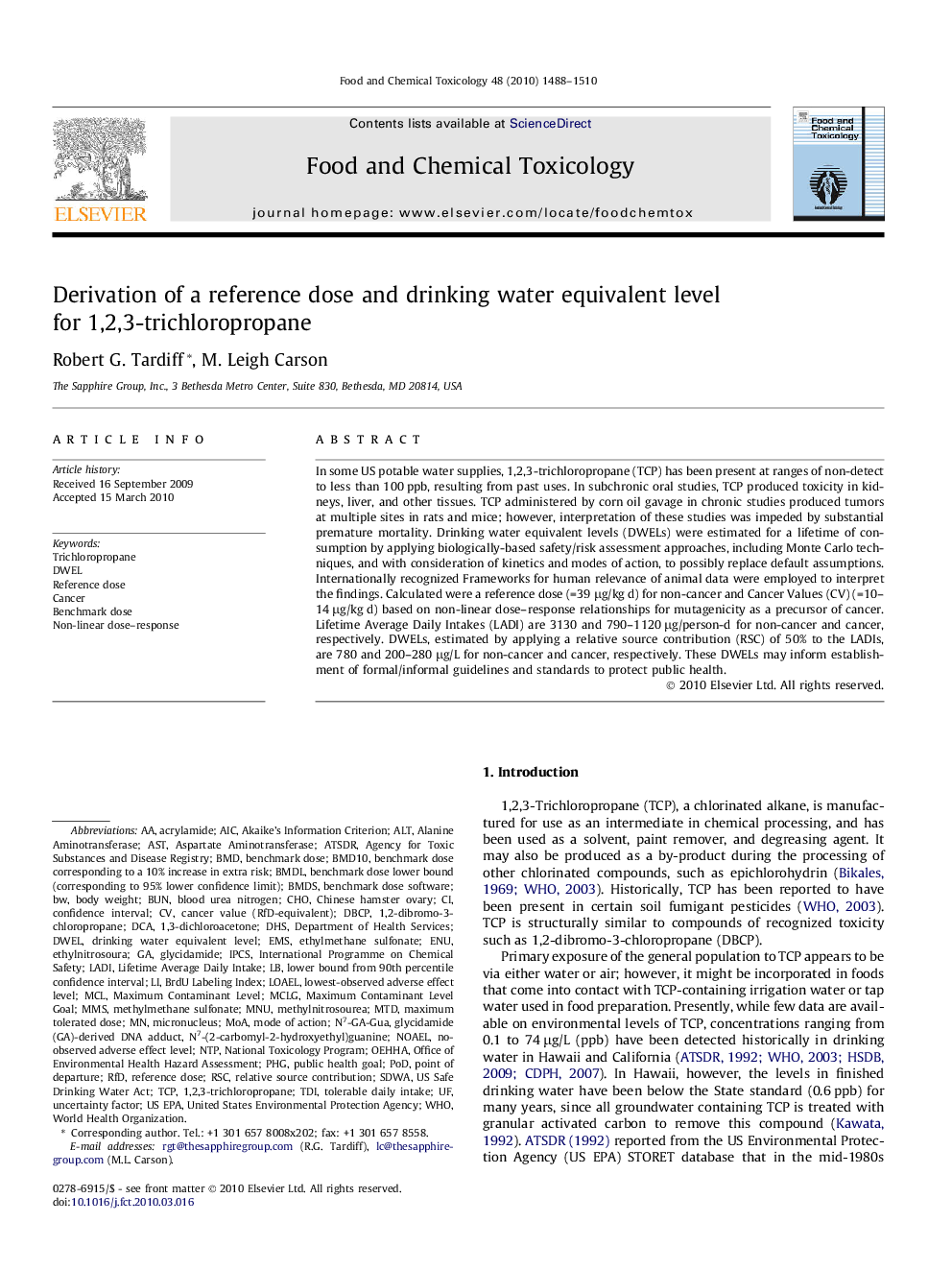| Article ID | Journal | Published Year | Pages | File Type |
|---|---|---|---|---|
| 5854169 | Food and Chemical Toxicology | 2010 | 23 Pages |
In some US potable water supplies, 1,2,3-trichloropropane (TCP) has been present at ranges of non-detect to less than 100 ppb, resulting from past uses. In subchronic oral studies, TCP produced toxicity in kidneys, liver, and other tissues. TCP administered by corn oil gavage in chronic studies produced tumors at multiple sites in rats and mice; however, interpretation of these studies was impeded by substantial premature mortality. Drinking water equivalent levels (DWELs) were estimated for a lifetime of consumption by applying biologically-based safety/risk assessment approaches, including Monte Carlo techniques, and with consideration of kinetics and modes of action, to possibly replace default assumptions. Internationally recognized Frameworks for human relevance of animal data were employed to interpret the findings. Calculated were a reference dose (=39 μg/kg d) for non-cancer and Cancer Values (CV) (=10-14 μg/kg d) based on non-linear dose-response relationships for mutagenicity as a precursor of cancer. Lifetime Average Daily Intakes (LADI) are 3130 and 790-1120 μg/person-d for non-cancer and cancer, respectively. DWELs, estimated by applying a relative source contribution (RSC) of 50% to the LADIs, are 780 and 200-280 μg/L for non-cancer and cancer, respectively. These DWELs may inform establishment of formal/informal guidelines and standards to protect public health.
